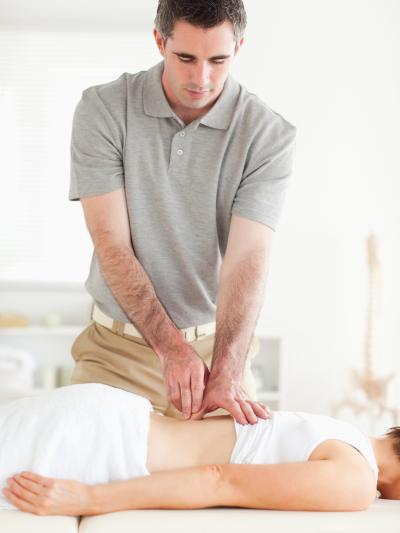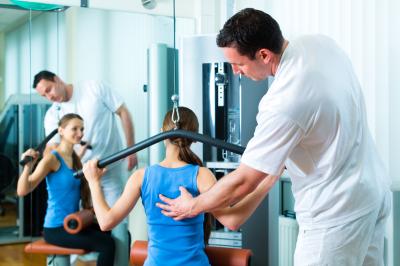physiotherapy
The goal of immediate postoperative treatment is mobilization of the patient. In addition to behavioral patterns for changing body position, muscular tension and relaxation techniques are applied. Depending on the patient’s capability, a gradual increase in exercise can take place. The goal is to achieve a return to normal life within the first six week after surgery, regardless of the surgical technique used.
Read More... training
Depending on the preoperative complaint and treatment course, the resulting muscular deficits can only be eliminated through training efforts. This phase can last for months or years depending on the extent of loss of fitness and the individual situation of the patient. It must be taken into consideration that not every patient can be trained the same. Therefore, training should always be done under professional supervision. It should be noted that performance reviews should be based solely on the patient’s individual progress. Comparisons to other patients with the same or similar diagnoses and therapies are ineffective in terms of achievements and tend to lead to frustrations with corresponding setbacks and perceived "failures".
Read More... pain management
In cases of long term, chronic pain syndrome with corresponding pain management, a surgical intervention has to be followed by professional pain management in order to gradually show the desired results. Surgical interventions often lead to a decrease in symptoms, although it must be taken into consideration that despite pre-operative therapy, the situation was bad enough to warrant a surgical intervention. Thus, it should not be expected that all problems have been fixed by the intervention. Postoperative pain management must also take into account that postoperative pain is added to to the preoperative pain level. Possible new complaints are usually a result of changes in muscular tension that are caused by the surgical reconstruction of the spinal curvature. Pain management very often helps patients to feel good enough to begin training and improve gradually. Pain management can be reduced in accordance to increase in performance and well-being.
Read More... 


 Stenum Hospital
Stenum Hospital Asklepios Hospital
Asklepios Hospital